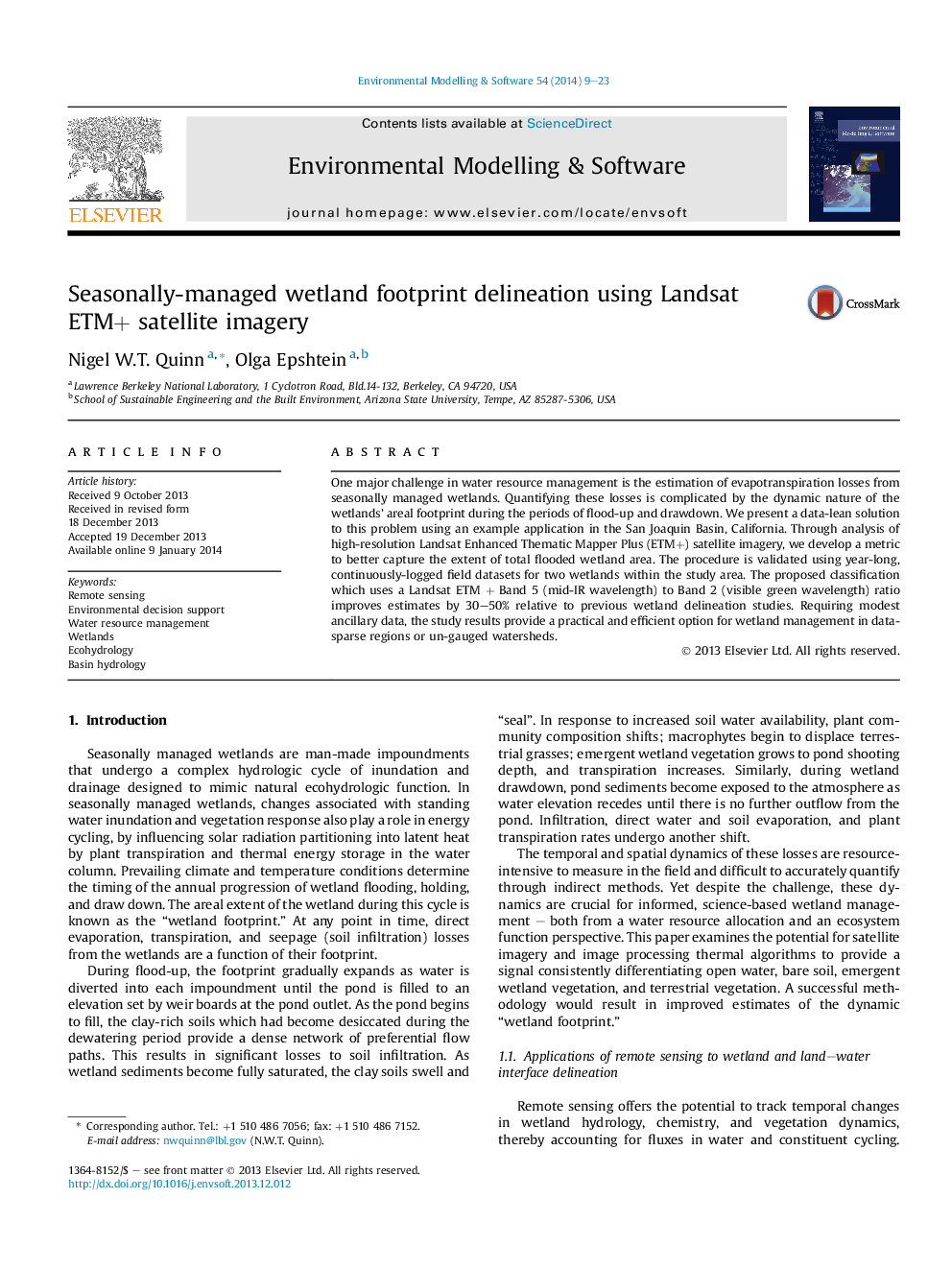| Article ID | Journal | Published Year | Pages | File Type |
|---|---|---|---|---|
| 568873 | Environmental Modelling & Software | 2014 | 15 Pages |
•A method to delineate the wetland footprint of seasonal wetlands is proposed.•Surface temperature is used to discriminate flooded and terrestrial vegetation.•Use of a Landsat ETM+ 5/2 band ratio improves accuracy of delineation by up to 50%.•Classification was validated using field-based data of flooded wetland hydrology.
One major challenge in water resource management is the estimation of evapotranspiration losses from seasonally managed wetlands. Quantifying these losses is complicated by the dynamic nature of the wetlands' areal footprint during the periods of flood-up and drawdown. We present a data-lean solution to this problem using an example application in the San Joaquin Basin, California. Through analysis of high-resolution Landsat Enhanced Thematic Mapper Plus (ETM+) satellite imagery, we develop a metric to better capture the extent of total flooded wetland area. The procedure is validated using year-long, continuously-logged field datasets for two wetlands within the study area. The proposed classification which uses a Landsat ETM + Band 5 (mid-IR wavelength) to Band 2 (visible green wavelength) ratio improves estimates by 30–50% relative to previous wetland delineation studies. Requiring modest ancillary data, the study results provide a practical and efficient option for wetland management in data-sparse regions or un-gauged watersheds.
